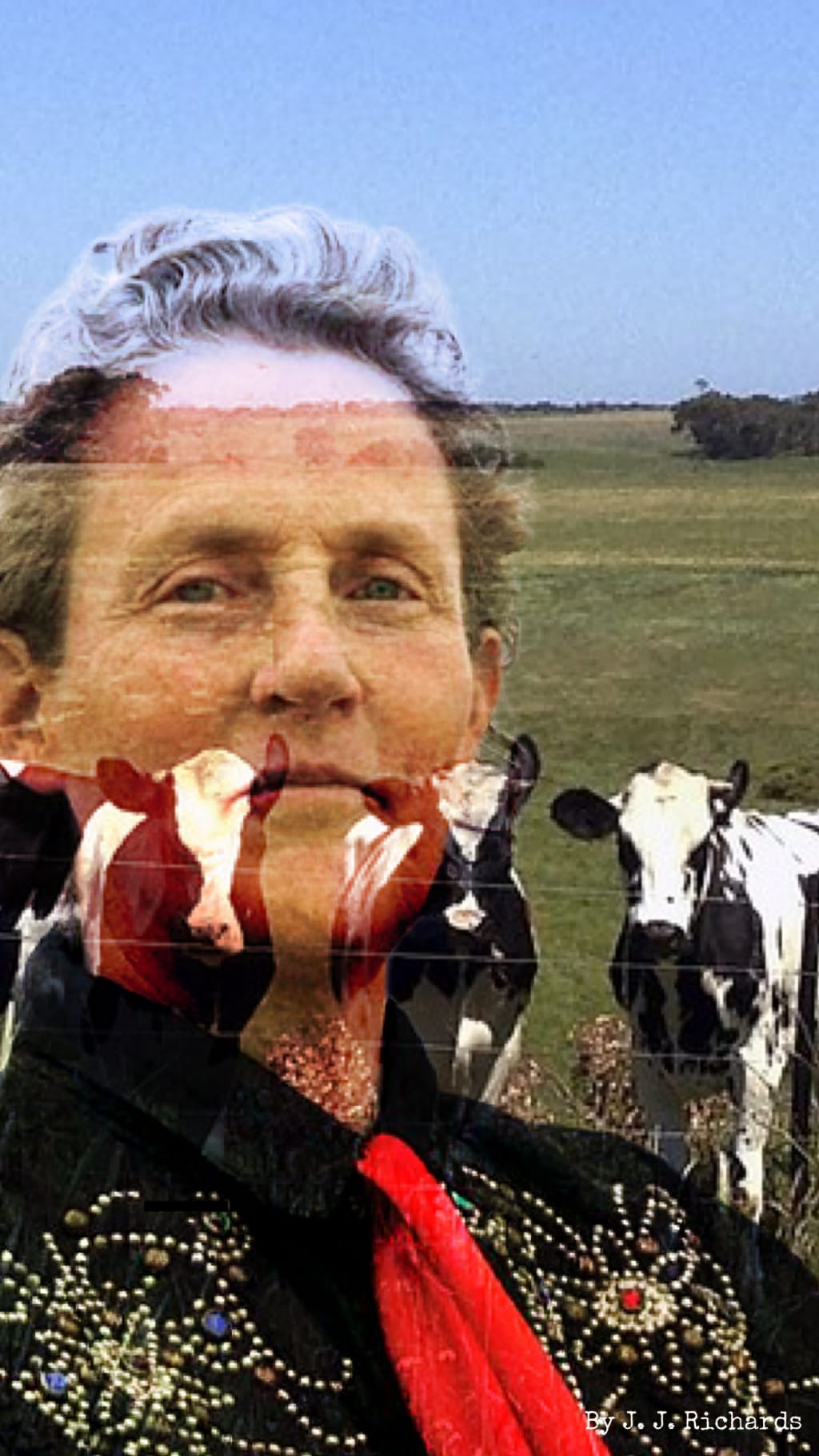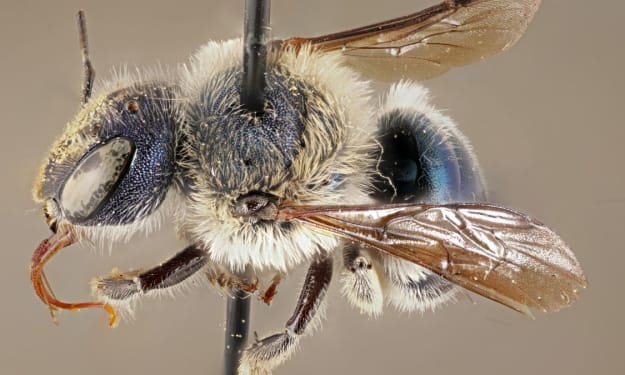Temple Grandin
”How Her Journey With Autism Became Her Success”

Sitting supine on my mother’s sofa, I relax in my usual way by listening to some of my favorite podcasts on my newly-bought IPad Air.
With soundbuds in my ears, I stay up a little later than routine as I binge-listen to Temple Grandin and the Autistic mind. I scroll through the various episodes of Temple Grandin. One seems to really grasp my attention: ’Temple Grandin read by Kat Taylor: Good Night Stories For Rebel Girls.’
As I sit peacefully still, I feel attached to Grandin. Like her, I am pretty rebellious. I chuckle to myself. I feel as if we are one of the same person. I feel as though Grandin and I have a lot in common. In fact, the similarities are uncanny. Taylor’s voice is so therapeutic, it almost lulls me to sleep.
However, we’re not even ready for bed. Our journey has just begun...
The Autistic Mind:
Temple Grandin was birthed into the world like any other typical infant. She would laugh, cry--even smile. But by the age of one, her mysterious condition began to surface.
The little girl’s behaviour seemed too off-putting: Grandin would flap her arms in the air again and again. She also had an obvious speech delay and a communication disorder.
This disorder was Autism.
After Grandin’s diagnosis, her father often disagreed with her mother--often making terrible remarks about their daughter’s condition. They would often fight because of this. Her father thought their little girl was criminally insane and crazy enough to be put into an institution.
But Grandin’s mother, Eustacia, convinced her father to send her off to boarding school, where her teachers could educate their young daughter by putting her in an all-inclusive environment.
Temple enjoyed the challenging learning environment of boarding school, and she got along fairly well there, too. Her instructors taught her to read fluently; they worked to cure her speech deficit, and they instructed her on how to perform fundamental mathematical calculations. Grandin even learned her table manners!
Temple was a very fortunate young lady being in this unique learning environment where everything felt routine and conforming. She dreaded the day when she would have to go back home to public school, where she didn't fit in at all. Temple recalls throwing a book at a girl’s face after hearing such a rude remark. She dreaded all of the hurtful things other kids her age said and did to her.
While no one really understood how to handle Grandin, she was an excellent student and her grades were superb--until she returned to the public school. Now, her grades suffered; her teachers called her ’stupid’ and other kids her age would label her as ’dumb, ’ or ’retarded.’
Temple was anything but.
Unlike average students, Temple thought in pictures. If you do not understand this, that is OK. But we all learn by association. When we are taught to call something by a name, we usually use images to correlate the name with the picture. We’re all human; this is just how we learn.
But for Grandin, and so many other children with Autism, thought in images is so prevalent. Like others with visual Autism, she began drawing pictures of everything in her mind to see how they might look like in reality. Grandin then decided to become an inventor.
So despite not fitting in ”socially, ” she found peace and tranquility in the field of agriculture. She enjoyed being out in nature; Grandin had a love for all animals. And the animals always brought her a sense of comfort. She became an animal activist later in life, inventing better farm equipment for the cattle, and for the other animals on her farmland.
So what is Autism, you may ask?
Today’s definition of Autism is much different than from Grandin’s childhood days.
Many thought Temple was ’weird’ or ’retarded, ’ labeling her as ’dumb, ’ and ’stupid.’ Albeit, the opposite was true! If anything, she proved them different. Temple Grandin is anything but slow.
She just thinks differently.
I happen to know, because I too, am on the Autism Spectrum.
And while many see it as a downfall of shortcoming, we see it as not. It is not something we want to be labeled as, because we take stigma very seriously, and we get angry with these labels. In fact, we just want to be understood; to be ourselves. We want to be heard and treated like everyone else.
We too empathize. We are human, too.
And unlike decades ago, there are better treatments for Autism today, although it is not something that we want to be cured ever.
You see, like Grandin’s mother, my mother was very responsive to my condition. And like any good parent, Grandin’s mother also took her daughter to a family psychologist, where she was diagnosed with the condition at a very young age.
Autism had a different diagnosis then than today.
Autism is a communication disorder. It is mostly diagnosed in infancy, but can be diagnosed in young adulthood. Many with the condition have speech delays, difficulty in social situations, repetitive behaviours, self-harm and obsessive actions or interests that may interfere with daily life tasks.
But with a little nurturing and affection, a person with Autism will grow far beyond belief!
In Grandin’s case, we see a child going from speechless actively engaging with others in the real world. Autism is such a diverse disorder that now has a spectrum of Autism disorders within the diagnosis. Prognosis of the condition is usually good, with the right therapies and medication. I am not saying that everyone with Autism is like Temple Grandin, but there are similarities in the comorbidities linked to the condition, such as anxiety and depression, to name only a few.
But like Grandin, we are successful; I am a writer, author, contributor and media influencer. I can drive. I am a future student at the University of Iowa and on my way to earn a PhD in neuroscience. I just love life, and I live every moment like it's my last.
Blessing in disguise? I see it as a blessing.
When I was about two years old, I began drawing like Grandin. I relied on visual characteristics for everything. Words had meaning, but what’s words without images? Everything had to have a label, with me. I recall my mother sticking labels on the cabinets and doors to help me learn vocabulary. As a girl, I was hyperlexic, which is a benefit for any Autism spectrum disorder. Hyperlexia is when you can read and write fluently at a very early age. I knew 200 words when I was just two years old, but I began drawing how I envisioned the words written out on paper may look like at the age of three.
And no, I didn't get there on my own. Like Grandin, I had a mother who nurtured my abilities, nurtured my talents--like a bee pollinates a flower.
And what Temple Grandin has taught us is inspiring. We can now diagnose and treat Autism sooner. We can also begin to empathize with all walks of life--everyone with or without the condition. We can stand together and accept people for who they are without change. Together, we can end the stigma.
Temple Grandin is living proof of how one may go years without speaking, to becoming an inventor and livestock activist who is vocally expressive. I’ve learned from her how to accept myself for who I am, not who I should or shouldn't be.
I’ve had struggles with the disorder, yet I see it as a good thing--I just use it to my advantage.
So in the words of Temple Grandin, “I am different, not less.”
By Author J.J. Richards
About the Creator
Jenna Richardson aka J. J. Richards
A four-time published author of many books, she also has published a poem for Kirkwood Community College literary magazine and on PIF Magazine online, as well. She is a Daisie.com contributor and collaborator, and is working on her degree.






Comments
There are no comments for this story
Be the first to respond and start the conversation.